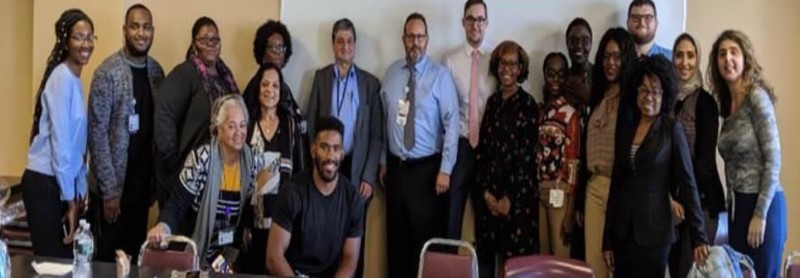East Orange General Hospital Telehealth Plan Enabled Ongoing Mental Health Delivery Services During Challenging COVID-19 Crisis in New Jersey

East Orange General Hospital (EOGH) in New Jersey has been serving the mental health needs of the community for decades. The hospital has three prescribers and seven licensed mental health clinicians in our outpatient department. Until the onset of the coronavirus in our area we were delivering more than 1,500 behavioral health services each month from our offices on Central Avenue.
As COVID-19 began to sweep across northern New Jersey it became apparent that to continue delivering essential mental health treatment we would have to adapt quickly. With intensive care beds filling rapidly our hospital partnered with the State of New Jersey and the Army Corp of Engineers to convert what was our outpatient mental health clinics into acute care units.
This change, while necessary, presented a new challenge to nearly 1,000 active cases receiving mental health treatment at our outpatient facility. Thanks to an experienced management team we designed a telehealth plan. The team worked to quickly ramp up virtual psychiatric provider and psychotherapy clinics amidst the pandemic.
While the early days were filled with trial and error fueled by uncertainty, the management and clinical staff worked tirelessly to assure every patient was contacted and their changing needs assessed.
As the days turned into weeks the patients’ demand for care from the safety of their own homes began to grow. With depression and anxiety on the rise in our communities we were soon providing more than 2,000 units of service each month.
Reaching into people’s homes to provide care became the norm. On an afternoon in May telepsychiatry proved even more valuable then we could have anticipated. During a scheduled psychotherapy session with one of our adolescent patients the provider noticed a disturbance in the home.
The provider coached the adolescent to explore what was happening. Knowing our patient lived with her mother, whom we had historically engaged in the therapeutic process, the therapist asked to speak with the mother. It became apparent that mom was struggling. She was crying, lethargic, and having difficulty focusing.
The patient was becoming more upset seeing her mother in distress. While keeping the patient engaged, the provider was able to reach their supervisor and report the situation. The supervisor acted immediately while guiding the therapist. A rescue squad was dispatched to the residence. The patient’s mother was assessed and brought to our hospital for evaluation.
It was determined that she was suffering from depression, recently lost her job and was feeling hopeless. To ease her emotional pain, she took a dangerous combination of medications. The mother was admitted and after a few days was able to return to her family. Mother and daughter now receive family counseling and attend a support group for those struggling with depression.
While every story may not have a happy ending, this is a case where telepsychiatry made the difference. Being able to safely reach into the community to deliver essential services gives us a different perspective. It allows for clinicians to be in the environment in which our patients live. On that spring afternoon, it made all the difference in the world to that family. Telepsychiatry saved a life.
East
